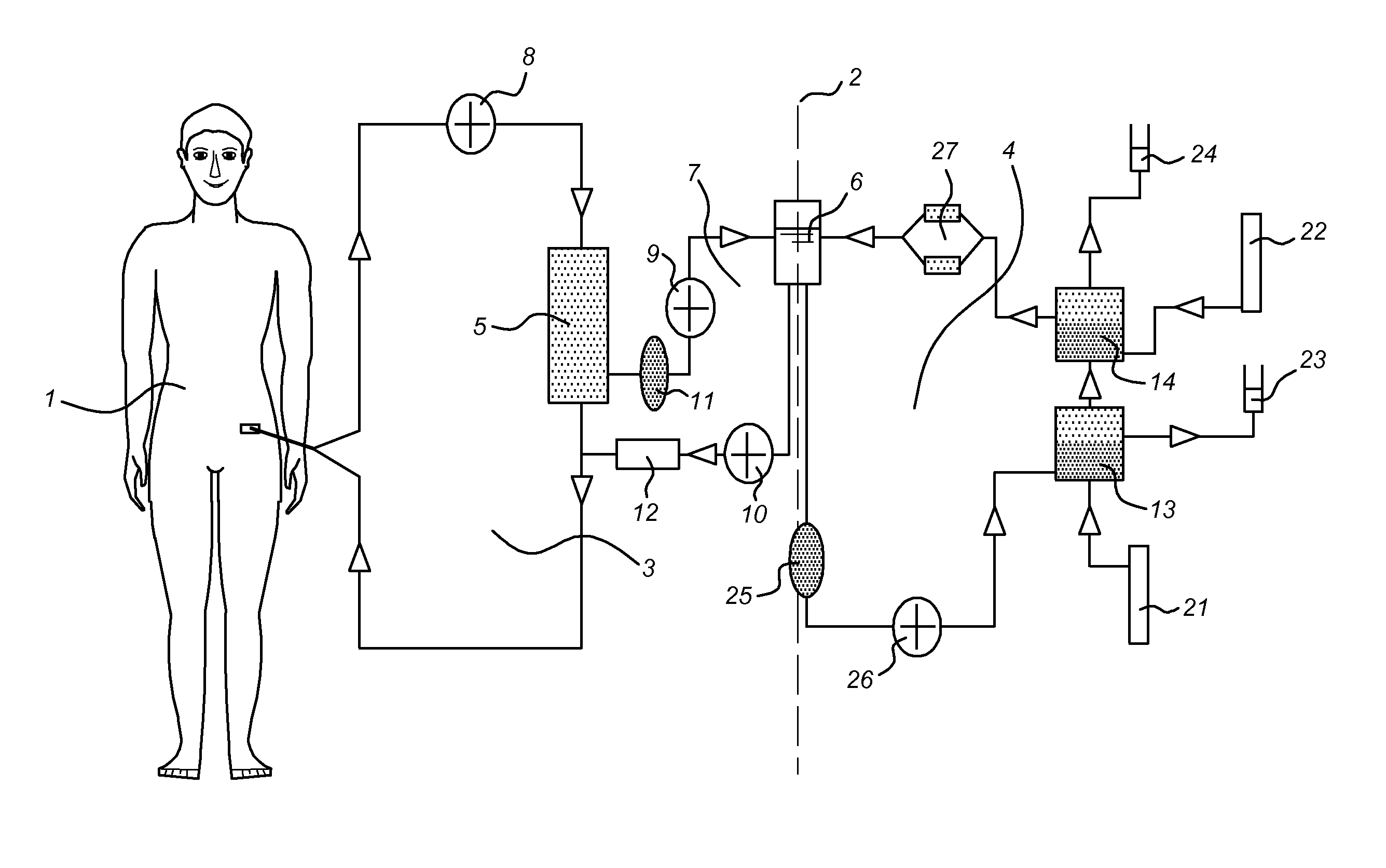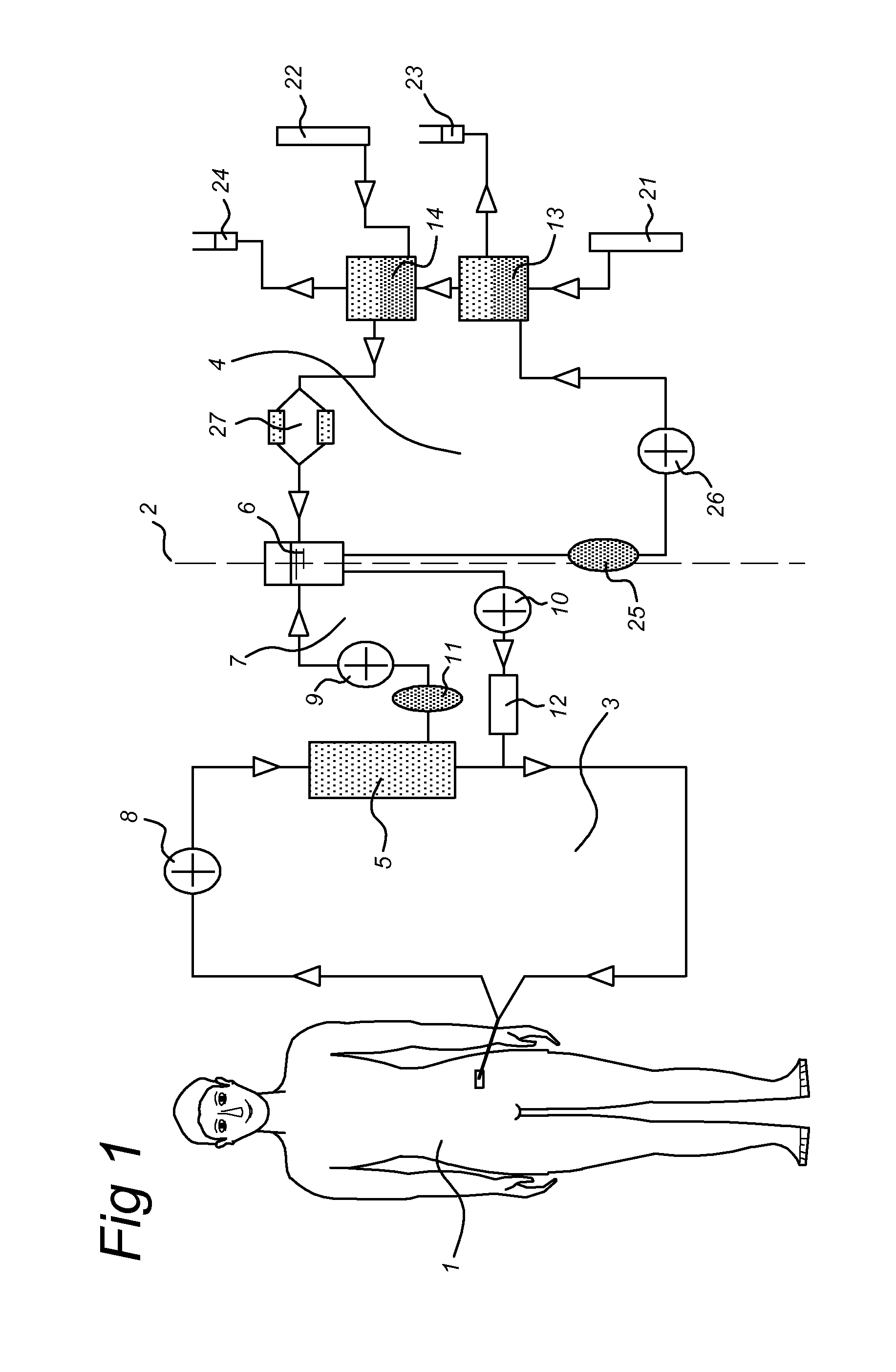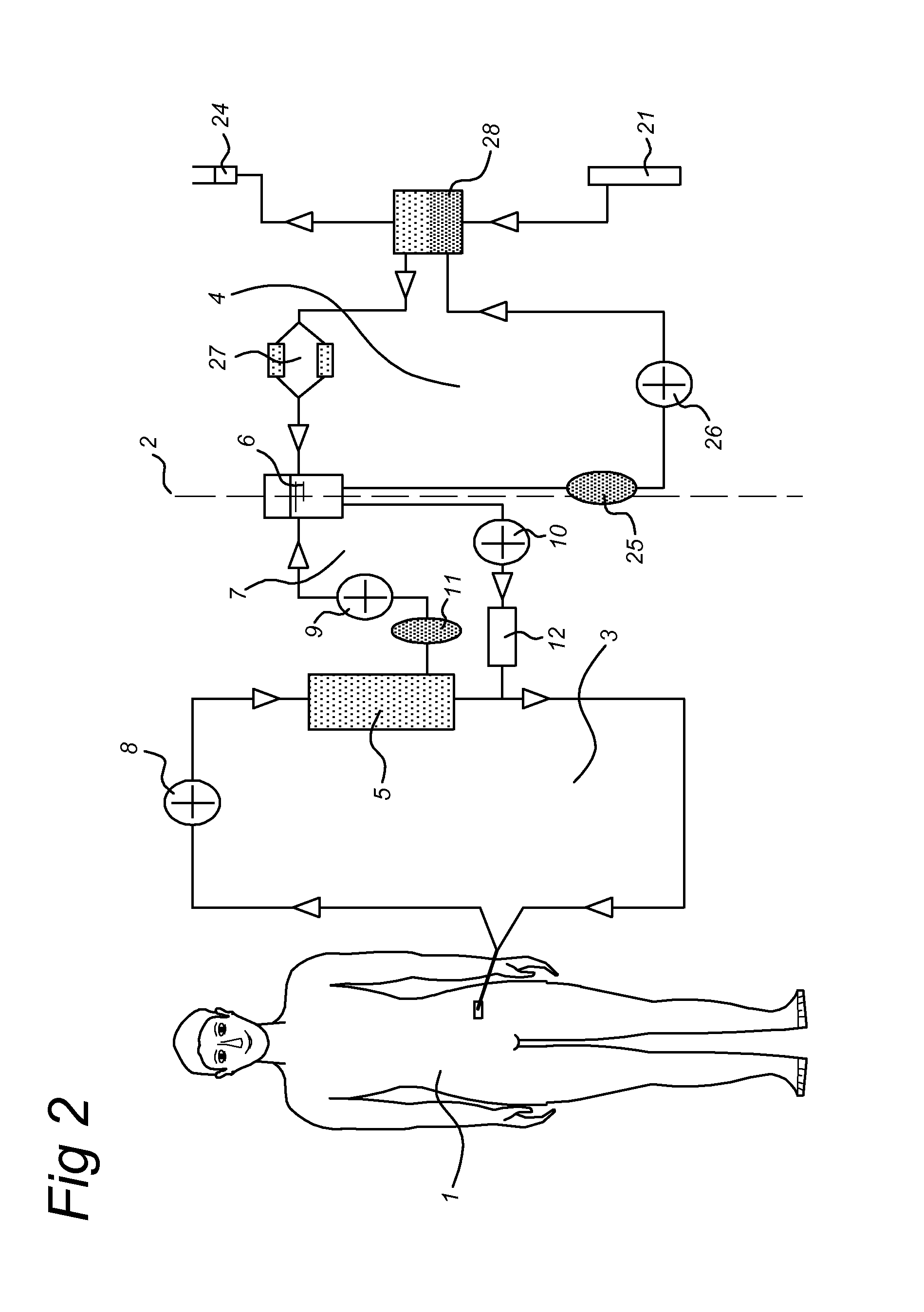Differentiated human liver cell cultures and their use in bioartificial liver systems
a liver system and liver cell technology, applied in the field of differentiated human liver cell cultures and their use in bioartificial liver systems, can solve the problems of increasing plasma ammonia levels, affecting the degree of liver specific function, and affecting the safety of use,
- Summary
- Abstract
- Description
- Claims
- Application Information
AI Technical Summary
Benefits of technology
Problems solved by technology
Method used
Image
Examples
example 1
Preparation of HepaRG Cell Cultures in Monolayer
HepaRG Culture in Monolayer
[0140]HepaRG cells are primarily expanded in monolayer at 37° C. in a humidified atmosphere (95% air, 5% CO2), since proliferation reduces when the cells are cultured in the bioreactor. The culture medium (HepaRG medium) consists out of Williams' E medium (Lonza) with 10% fetal bovine serum (FBS, Lonza), 5 μg / ml insulin (Sigma), 50 μM hydrocortisone hemisuccinate (Sigma), 1 U / ml penicillin / streptomycin (Lonza) and 2 mM glutamine (Lonza). The applied FBS batch should be tested before large expansion of the cells will be carried out (see below).
Testing FBS Batch and Functionality in Monolayer
[0141]The performance of the HepaRG cells can be tested in monolayer to optimize culture conditions that may be applicable to BAL cultures as well. Furthermore the appropriate FBS batch can be selected, this way. Differences in functionality of the cells were found, depending on the batch of FBS used. Therefore the batch sh...
example 2
Preparation of a Bioreactor Comprising Differentiated HepaRG Cell Cultures and Evaluation of their Metabolic and Detoxification Functionality
Large-Scale HepaRG Expansion
[0159]The cells are cultured using Hyperflasks™ (Corning) as follows. The medium is refreshed every three days. After a 2 weeks proliferation phase, at confluence, the cultures are washed twice in phosphate buffered saline and then detached by 15 min incubation in 60 ml / Hyperflask™ of Accutase™ and Accumax™ (both from Innovative Cell Technologies Inc.) in a 4:1 ratio at 37° C. The cells are harvested from the Hyperflask™ and three times washed with HepaRG medium by centrifugation at 4° C. and 3×50 g. Approximately 1.2 ml of cell pellet is harvested from one Hyperflask™. The harvested cells are used for passaging at a split ratio of 1:6 for further expansion or for loading into the AMC-BAL bioreactor. Viability is determined by trypan blue exclusion test: cells are only used to charge the AMC-BAL bioreactor if their v...
example 3
Operating Procedure of Application of the Bioartificial Liver
[0168]The charged and tested AMC-BAL bioreactor, as described in example 1, is flushed by an electrolyte solution (Schiwa) to wash out test- and culture medium and transported while stored on ice to the medical centre in demand of the bioreactor. The charged bioreactor is connected to the patient within 4 hours.
[0169]Extra-corporeal hemodialysis and plasmapheresis are standard procedures at Intensive Cares (IC). The BAL system (see FIG. 1) consists of a plasma circuit including the bioreactor and a blood circuit incorporating a plasma-separator. Blood is pumped (50 ml / min) from the veno-venous or arterio-venous catheters to the plasma separator (Braun-Carex Diapact CRRT). This system enables continuous plasmapheresis for a period of 12 hours, after which the disposable needs to be replaced. The plasmafilter is Hemaplex BT 900 / A 0.2 m2. The plasma perfuses then through the bioreactor.
[0170]Between the bioreactor and the ret...
PUM
| Property | Measurement | Unit |
|---|---|---|
| temperature | aaaaa | aaaaa |
| doubling time | aaaaa | aaaaa |
| volume | aaaaa | aaaaa |
Abstract
Description
Claims
Application Information
 Login to View More
Login to View More - R&D
- Intellectual Property
- Life Sciences
- Materials
- Tech Scout
- Unparalleled Data Quality
- Higher Quality Content
- 60% Fewer Hallucinations
Browse by: Latest US Patents, China's latest patents, Technical Efficacy Thesaurus, Application Domain, Technology Topic, Popular Technical Reports.
© 2025 PatSnap. All rights reserved.Legal|Privacy policy|Modern Slavery Act Transparency Statement|Sitemap|About US| Contact US: help@patsnap.com



